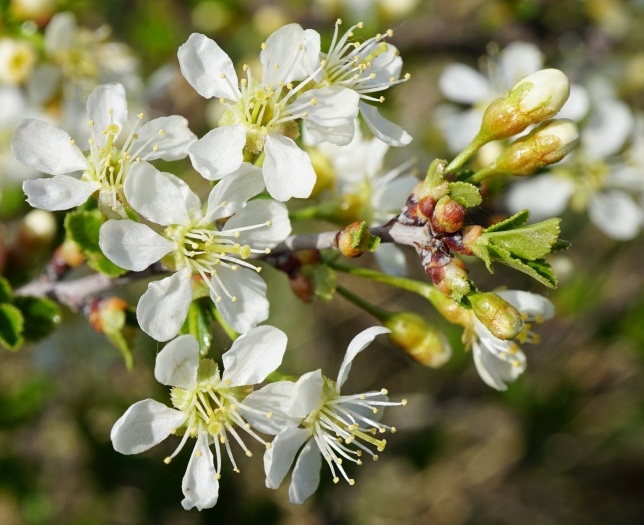European Dwarf Cherry
(Prunus fruticosa)
European Dwarf Cherry (Prunus fruticosa)
/
/

Patrick Hacker
CC BY 4.0



















































Estimated Native Range
Summary
The European Dwarf Cherry is valued for its ornamental white flowers, wildlife support, and its ability to stabilize soil. It is commonly used in hedgerows, as an ornamental plant for privacy screens and windbreaks, and for its ecological benefits as a host plant for bees, beneficial insects, and birds. The fruit is utilized in culinary applications such as cooking, jams, and jellies. This shrub is adaptable to a range of soil conditions, though it thrives best in loamy soil. It is also noted for its hardiness, making it a popular choice for grafting onto Prunus avium ’tree’ rootstock to create rounded top trees. For optimal growth, it requires full sun to part shade, medium water, and well-drained soil. However, gardeners should be aware of its potential to spread aggressively through root suckers, which may require management in smaller garden settings.CC BY-SA 4.0
Plant Description
- Plant Type: Shrub
- Height: 3-9 feet
- Width: 3-7 feet
- Growth Rate: Moderate
- Flower Color: White
- Flowering Season: Spring
- Leaf Retention: Deciduous
Growth Requirements
- Sun: Full Sun, Part Shade
- Water: Medium
- Drainage: Medium
Common Uses
Bee Garden, Bird Garden, Butterfly Garden, Edible*Disclaimer: Easyscape's listed plant edibility is for informational use. Always verify the safety and proper identification of any plant before consumption., Fragrant, Hedges, Low Maintenance, Rabbit Resistant, Showy Flowers
Natural Habitat
Native to grasslands, steppes, and open woodlands in Europe and Western Asia
Other Names
Common Names: European Ground Cherry , Mongolian Cherry , Ground Cherry , Steppe Cherry , Zwerg-Kirsche , Steppenkirsche , Zwergekirsche , Prunier Nain , Wisnia Karlowata , Stäppkörsbär
Scientific Names: Prunus fruticosa , Cerasus humilis , Cerasus pumila , Prunus chamaecerasus , Cereus fruticosa
GBIF Accepted Name: Prunus fruticosa Pall.